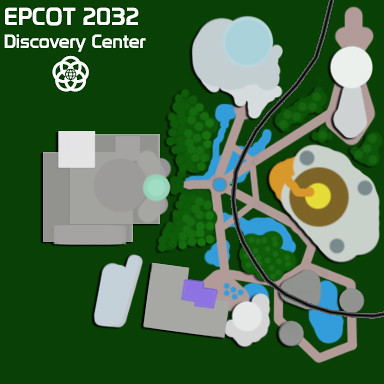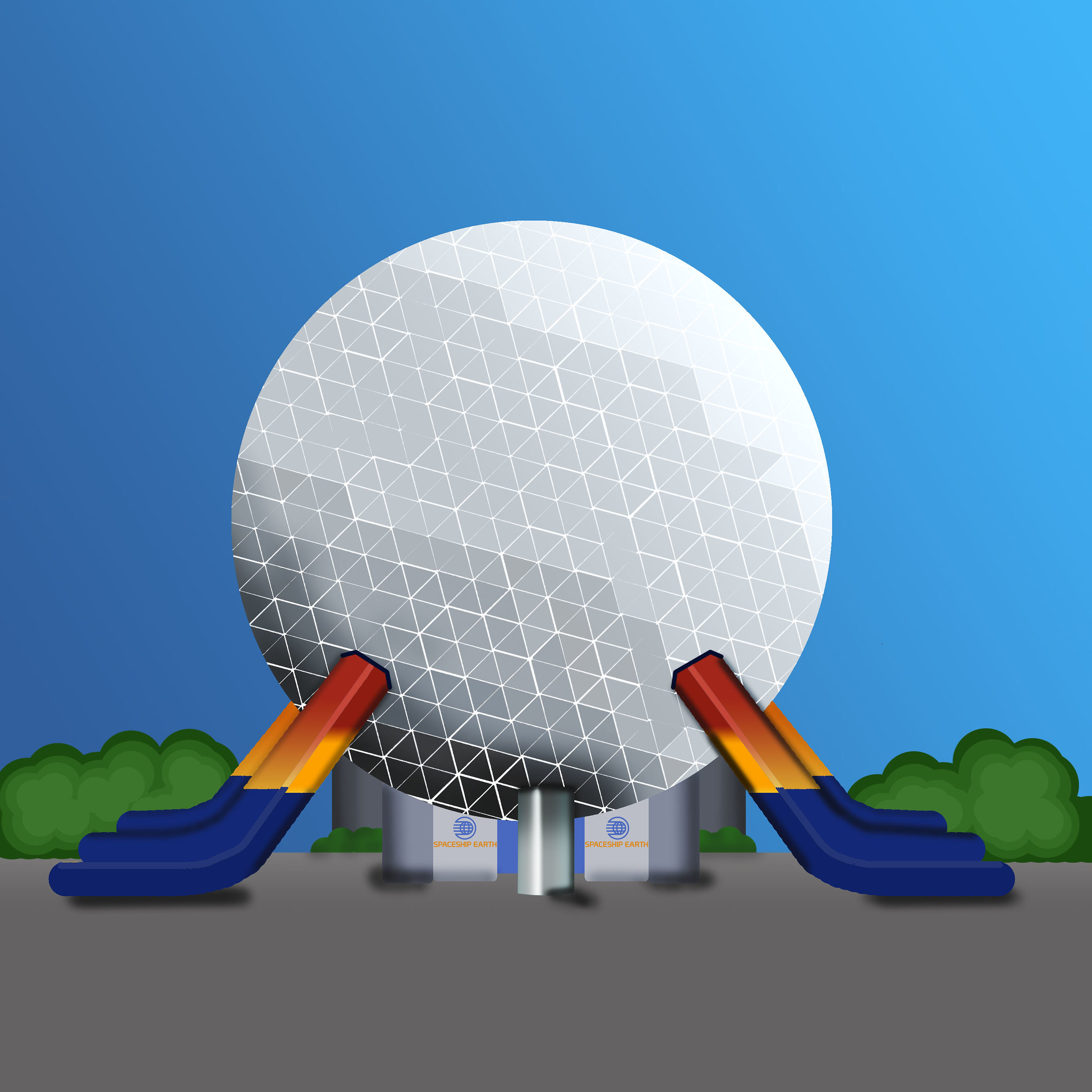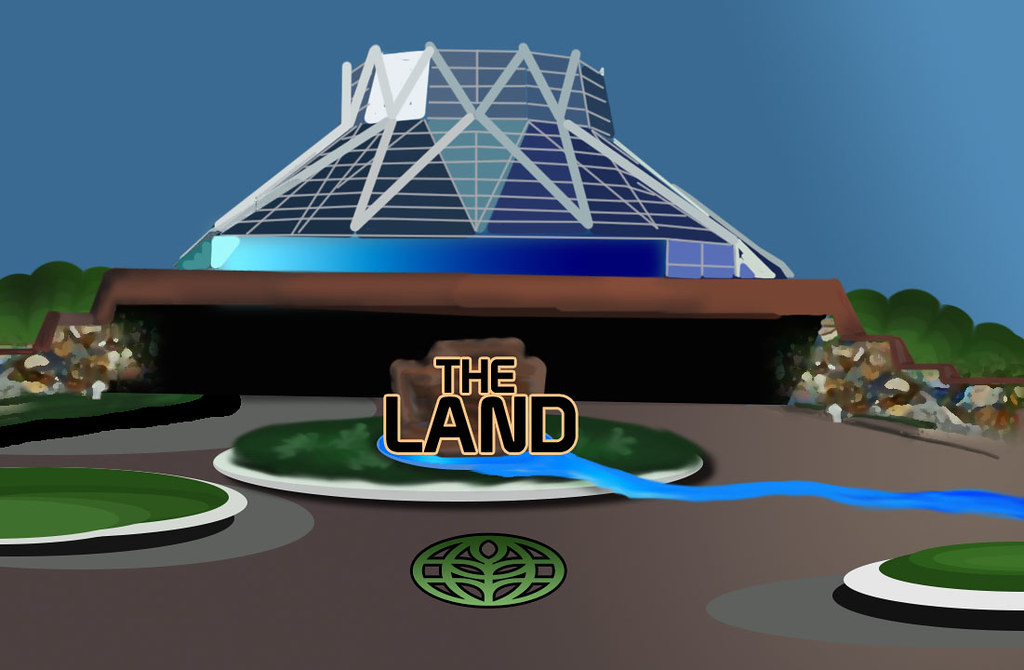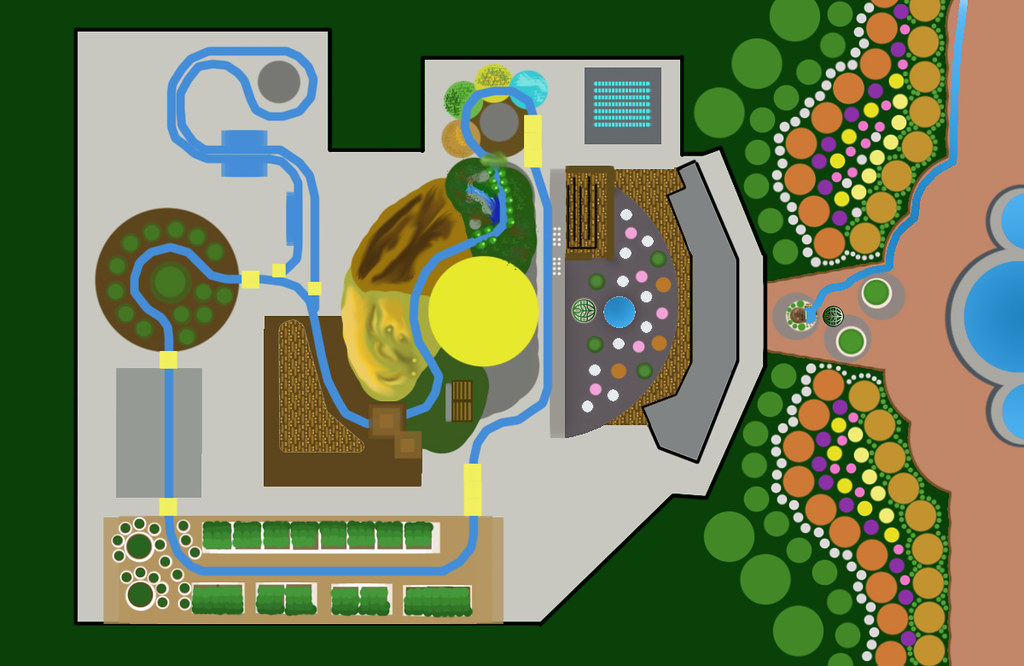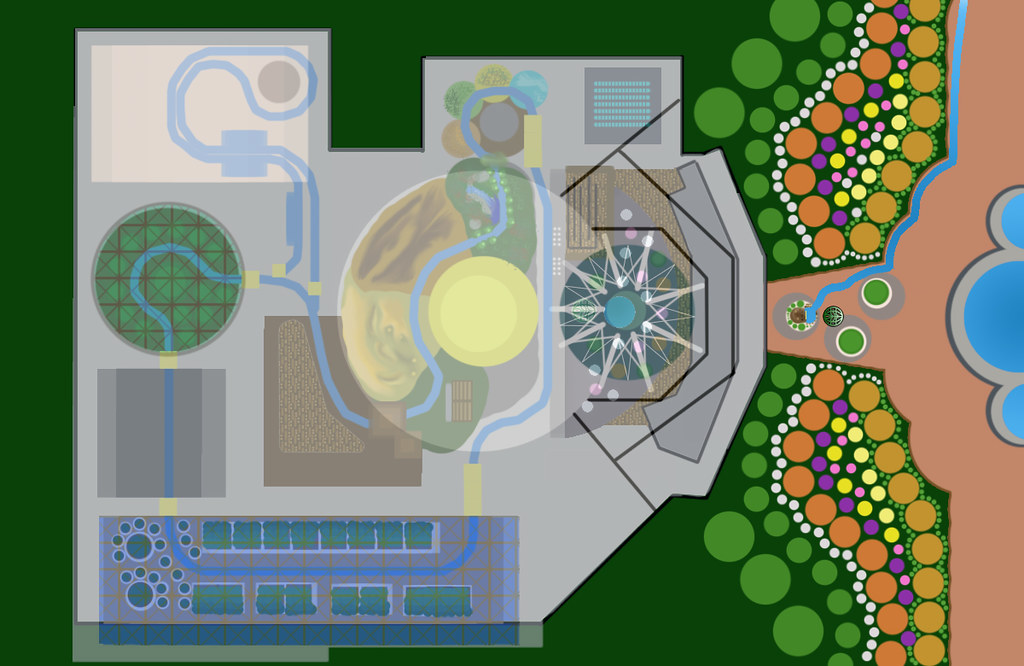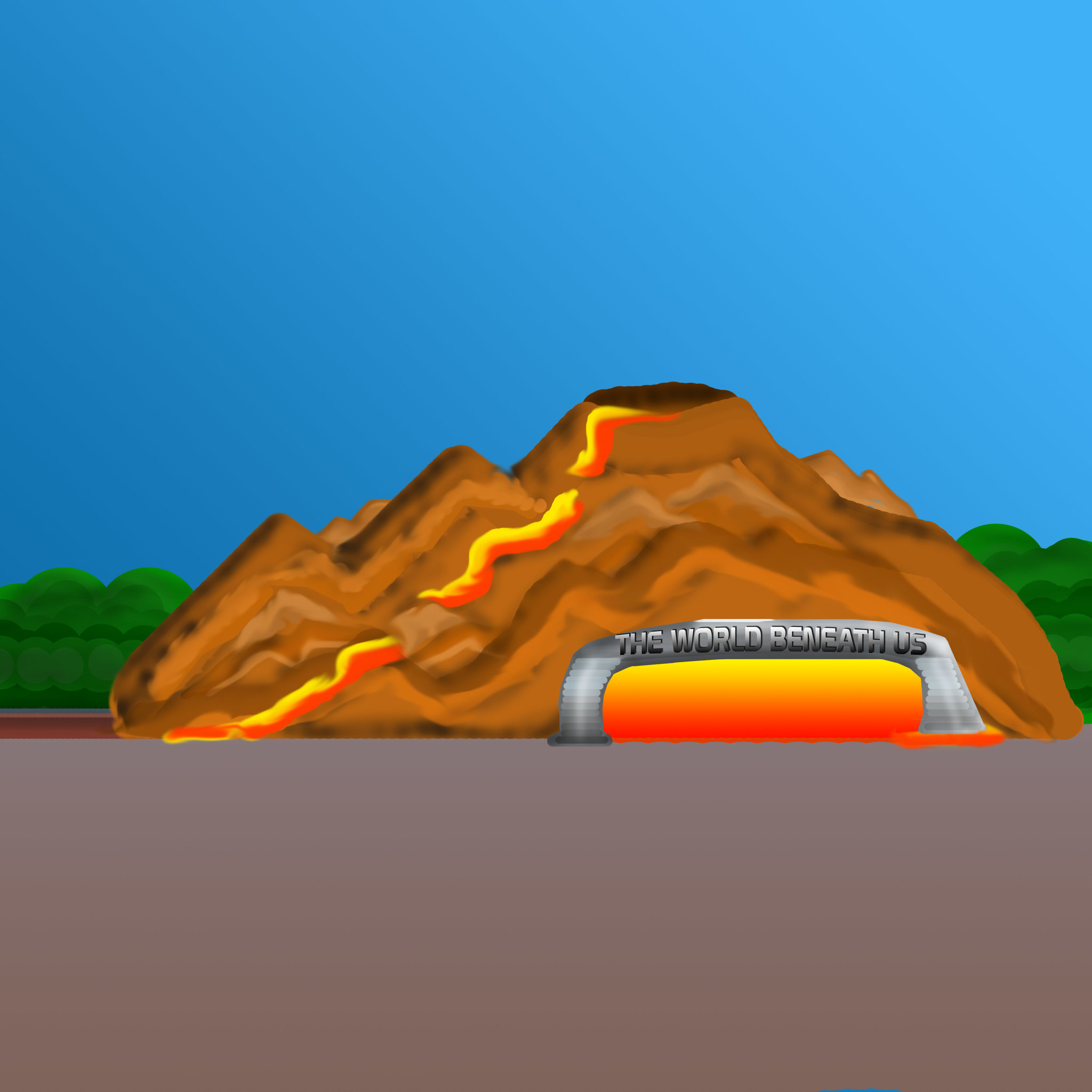Time to continue our tour of EPCOT Discovery Center
[/url]
So far, we've covered Imagination and The Seas.
I think it's time for the park icon.
Ahh, everyone's favorite geosphere.
You know what they say, "if it isn't broken,..you must not be talking about the descent in Spaceship Earth."
This attraction has been nearly perfect for its entire lifetime. Minus the ending where our time machine vehicles rotate backwards for our return to Earth. Well we can now fix that.
This is a good time to point out something of minor significance. The title of this area of the park is "Discovery Center." Not "Future World."
And EPCOT's Discovery Center, as well as EPCOT 2032 as a whole, will focus on science, and science fiction. As well as history, and fantasy.
That's the beauty here; there is no more inherent need to focus on predicting the future. And honestly, think back to all the classic EPCOT Center attractions, even the World Showcase ones. They all focus largely on telling the story of the past in order to bring us to the future.
Well, now Spaceship Earth can do what it does best and be itself. We can tell the story of the history of communication. And that's it.
(Once again, I will eventually provide art for each individual scene, in the meantime, use your Imaaaaaaginaaaation)!
(Heh, admit it, you sang it when you read it).
The Ascent:
We board our time travel vehicles and begin our climb. Experienced riders will immediately notice that the invasive screen that once hung above the ride track is gone. But the screens that were built into the ride vehicles for the same purpose remain. We'll get to those. As we ascend further up the pitch black tunnel, we soon see bright flashes of orange and purple light. They become more and more frequent, until they engulf the tunnel completely (picture the lights from Horizons during the transition from Imax to "the future.")
As we crest the initial lift, a sudden chill fills the air. All around us are glaciers, snowflakes are carried around us by a brisk wind, to the left is a large wooly mammoth, and to the right, a small group of primitive humans huddled around a bleak fire. This, we are told, is where we came from. Our screens briefly illuminate, though very dimly and non-intrusively, to provide more information about each scene we travel through. For example, in this case, we may get a small image of an icy planet Earth along with text (in the EPCOT font of course), letting us know that 100,000 years ago, our world was covered entirely in ice.
Next is the familiar cave painting scene, only with a minor update. One weary traveller is seen off to the side, sitting down, blowing on his visibly painful foot. A small homage to World of Motion. Our screens may display information about where it is believed humans first emerged in north Africa.
Traveling next to ancient Egypt, we glide through the opening of a massive pyramid that encompasses our entire view prior to entering an otherwise untouched scene. Our screens will display a basic diagram of the inside of a pyramid.
The scenes depicting the Phoenicians, Greeks, Romans, the fall of Rome, biblical times, Gutenberg's printing press, and the Renaissance all remain basically the same. Most changes are simply fresh coats of paint and new AAs where needed. That and of course our on screen supplementary guide. But one notable update will be a return of the horse projection during the "all roads lead to Rome" section. Because it's just cool, it's inexpensive, and I like it.
Things change again after the scene with the large printing press and the newsboy. The next scene depicts numerous high-rise buildings in a crowded metropolis, with electric lines crisscrossing between the structures, as well as over our ride track. Various windows illuminate to show different figures communicating via phone.
Next, we join a flock of various automobiles all pulling into a drive-in theater. The theater looms ahead, playing clips of various Disney cartoons and other productions from the 1930s, 40s, and 50s. Our ride vehicle travels through the bottom of the screen.
Moving on, we come across an outdoor styled scene with a giant satellite dish, surrounded by a stylized silhouetted neighborhood against a sunset filled sky. Beams of light and various images are seen being beamed into the dish.
Transitioning to the next seen, we come upon another massive screen depicting a Saturn V rocket launch, which serves as a segue for the classic moon landing/living room scene.
Next is an abbreviated version of both the supercomputer scene and the Steve Jobs garage scene, which leads directly to a new scene depicting a teenage girl in her room talking to her friend via Skype, and in a small homage to Horizons, her friend's portion of the identical conversation will be depicted on the other side of the ride tracks.
This leads to the final transition tunnel, which is absolute pitch black. Our vehicles slowly rotate 90 degrees to the right, the music comes to a thunderous crescendo, the instrumental version of "Tomorrow's Child" radiates throughout our vehicle, and we enter a dramatically updated planetarium scene. The black sky is filled with glistening stars of various luminosity. Asteroids, comets, and the occasional small planet are projected against the sky. And in the center of the room is an actual rendition of Earth, slowly rotating, along with Luna, our only moon. Projection effects illuminate the globe from within, creating images of cloud patterns swirling around the globe. As we transition out of the room, our in vehicle screens offer a number of diagrams to give us a sense of scale as our world compares to the rest of the cosmos.
This brings us to the descent.
The descent tunnel continues our theme of space, blanketing us with darkness and stars. As we descend further, the stars become fewer and fewer. A dense layer of fog suddenly surrounds us which then gives way to a new sky. A familiar sky. Our sky, adjusting in real time. It may be a bright, brilliant blue, or a dark, starry night, or sunset. That all depends on the actual time of day we are riding.
At this point, our screens light up one last time, and in another throwback, we now have an interactive map of EPCOT at our disposal. Using the touchscreen technology, we can zoom in and out, highlight specific attractions, see updated wait times, and even get a live look in at Earth Station, which is our next stop.
Above us, we descend right into a facade of the 18 story geosphere, symbolizing our return to earth, and the conclusion of our journey.
Earth Station will be an abridged version of a modern day Communicore. That is, it will have various small displays from technology companies showing off their latest gadgets, games, and appliances that allow us to communicate in new ways. These displays will be intentionally temporary looking, as they are designed to be changed in and out literally overnight. This is the one element of the area that will remain somewhat futuristic in its intention. Additionally, there will be small ancillary displays dedicated to pioneers of communication. And just because I can and I want to, there will be a small area to the center of the area dedicated to the history of EPCOT Center. It will contain models, images, blueprints, and small props.
We hope you have enjoyed your journey aboard Spaceship Earth. Please enjoy the rest of your time with us at EPCOT's Discovery Center!
The Land is next.

